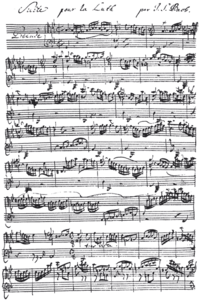
Photo from wikipedia
Background Stroke patients are often inactive outside of structured therapy sessions – an enduring international challenge despite large scale organizational changes, national guidelines and performance targets. We examined whether experienced-based… Click to show full abstract
Background Stroke patients are often inactive outside of structured therapy sessions – an enduring international challenge despite large scale organizational changes, national guidelines and performance targets. We examined whether experienced-based co-design (EBCD) – an improvement methodology – could address inactivity in stroke units. Aims To evaluate the feasibility and impact of patients, carers, and staff co-designing and implementing improvements to increase supervised and independent therapeutic patient activity in stroke units and to compare use of full and accelerated EBCD cycles. Methods Mixed-methods case comparison in four stroke units in England. Results Interviews were held with 156 patients, staff, and carers in total; ethnographic observations for 364 hours, behavioral mapping of 68 patients, and self-report surveys from 179 patients, pre- and post-implementation of EBCD improvement cycles. Three priority areas emerged: (1) ‘Space’ (environment); (2) ‘Activity opportunities’ and (3) ‘Communication’. More than 40 improvements were co-designed and implemented to address these priorities across participating units. Post-implementation interview and ethnographic observational data confirmed use of new social spaces and increased activity opportunities. However, staff interactions remained largely task-driven with limited focus on enabling patient activity. Behavioral mapping indicated some increases in social, cognitive, and physical activity post-implementation, but was variable across sites. Survey responses rates were low at 12–38% and inconclusive. Conclusion It was feasible to implement EBCD in stroke units. This resulted in multiple improvements in stroke unit environments and increased activity opportunities but minimal change in recorded activity levels. There was no discernible difference in experience or outcome between full and accelerated EBCD; this methodology could be used across hospital stroke units to assist staff and other stakeholders to co-design and implement improvement plans.
Journal Title: International Journal of Stroke
Year Published: 2020
Link to full text (if available)
Share on Social Media: Sign Up to like & get
recommendations!